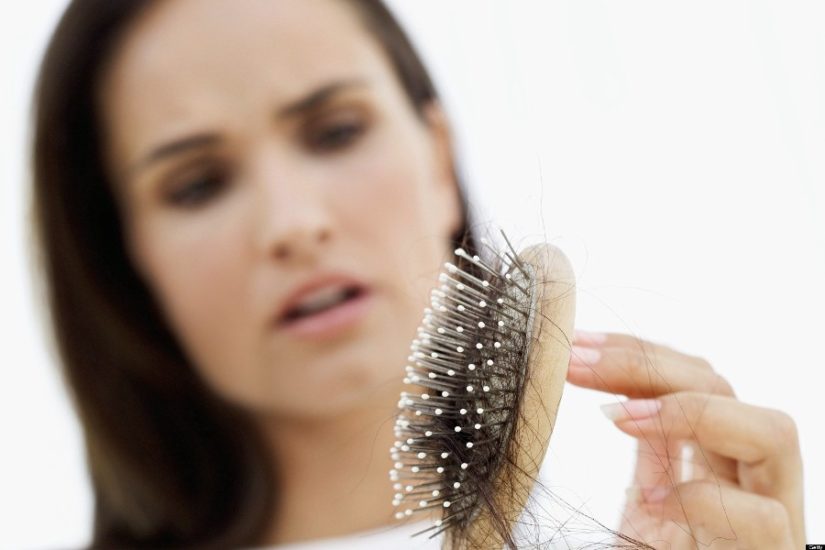Why Hair Falls Out? Remedies for Hair Loss
 Falling out is a natural process for hair. Losing around 50 hairs is said to be the daily norm. This number grows to 100 in autumn. You can start worrying only when the hair fall is intensified. It’s time for giving a few hair and scalp-nourishing remedies a go. If they fail, see a doctor; a trichologist treats hair and scalp-related conditions. Before you learn the remedies for hair loss, find out why hair falls out.
Falling out is a natural process for hair. Losing around 50 hairs is said to be the daily norm. This number grows to 100 in autumn. You can start worrying only when the hair fall is intensified. It’s time for giving a few hair and scalp-nourishing remedies a go. If they fail, see a doctor; a trichologist treats hair and scalp-related conditions. Before you learn the remedies for hair loss, find out why hair falls out.
Why your hair falls out
Falling-out hair shouldn’t give you sleepless nights if it doesn’t last long and occurs just in some seasons e.g. early spring and autumn. That’s the time when the weather and – consequently – the skin undergo changes. Winter or summer-dry skin needs a double dose of moisture. A poor body condition appears through brittle nails, skin problems and hair loss.
Also hormones are blamed for seasonal hair loss. Estrogen – a female hormone – is secreted in larger amounts in spring and summer thanks to the sunlight. On the other hand, its production is hindered in autumn and winter; at the same time, the level of testosterone increases and is responsible for the hair loss problem.
Remedies for Hair Loss
In order to prevent hair from falling out or at least largely reduce this process, you need to:
change your diet
To be more precise – complement it with unsaturated fatty acids which can be found in olive oil, olives and pumpkin or sunflower seeds. Every other day eat fish protein in various forms and vitamin-rich fruit. Even frozen fruit is worth choosing – it contains lots of nutrient, too.
cut off around two or three inches
Pixie style is recommended for really short hair.
use a blow-dryer and other heat styling tools on rare occasions
If you use a hot air flow. Cool or cold air doesn’t damage hair so you can use it on a daily basis.
moisturise your hair
Before a hair wash, try applying a moisturising lotion or a chosen hair oil, leave it in for an hour. After washing, apply a good conditioner throughout hair lengths.
care for your scalp
To make it possible, do a gentle scalp scrub regularly, mildly wash it using delicate products and keep it moisturised. If you’re struggling with oily scalp, give up massages, hot water for rinsing and hot baths because heated skin is sweaty and greasy.
tie hair up and wear a hat in winter and autumn
Weather affects the condition of scalp and hair – minus temps and harsh wind do harm. That’s why a hat is a must-wear.
Hair Loss vs Choice of a Shampoo
Using unsuitable products may be linked to hair loss, dryness, itchy scalp and dandruff. That’s why, before buying a shampoo or conditioner, make sure you know your hair type. The so-called combination hair – greasy scalp and dry ends – loses freshness and shape quickly. Its care is really bothersome because you need several products – for washing and nourishing hair ends.
On the other hand, oily hair easily gets static and deformed under a hat. Only several hours after washing, you get the greasy, second-day hair look. Herbal shampoos – free of oils and too many fragrances – give best results for oily hair care.
Dry hair is usually damaged, dull, brittle and has splitting ends. Despite applying a mask or conditioner, the combing routine is a challenge. Dry hair is usually the consequence of wrong coloring routine, sun exposure without protection and not using proper nourishing products. To care for dry hair, go for shampoos and conditioners designed for this hair type, namely, moisturising products.
For a daily hair wash, it’s best if you choose very mild shampoos with the possibly smallest number of ingredients. That is why shampoos dedicated to babies and infants make a good choice. A regular shampoo that goes along with a hair type should be used once or twice a week – that’s enough to wash the impurities away.
Anti Hair Loss Balms & Conditioners
A hair balm is designed for an everyday hair care yet it lacks healing or regenerating properties. Instead, it seals hair cuticles and makes brushing routine easier. At the same time, it’s easy to use – simply apply it to hair, leave in for a few minutes and carry on with the morning or evening routine. Balms can be applied to lengths, especially hair ends, not to the scalp. Otherwise, your hair will get greasy fast. For comparison, conditioners are richer in repairing ingredients and can be used only 2-3 times a week.
Instead of balms or conditioners, you should try a horsetail hair rinse, preferably mixed with burdock and soapwort root. Blondes can reach for a camomile rinse which has lightening, anti-inflammatory and soothing power.

SPF: Most Common Mistakes. Don’t Make Them!
Summer is coming! You’ve probably already planned everything: what places you’re gonna...
10 Crazy (Yet True) Facts about Natural Oils
Everybody knows and uses oils. Sunflower oil, rapeseed oil, olive oil are used in the kitchen. However,...